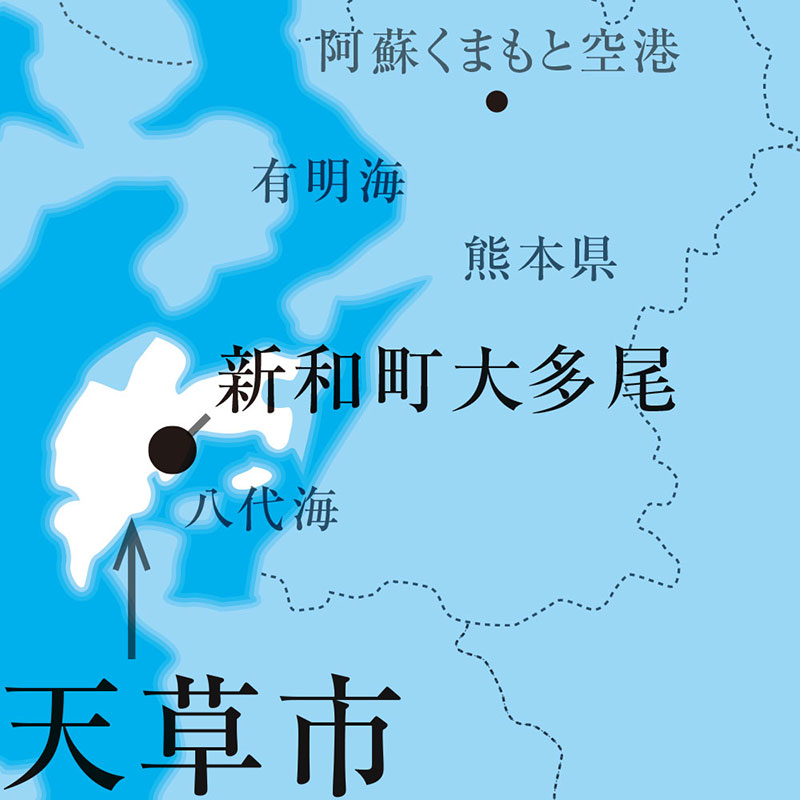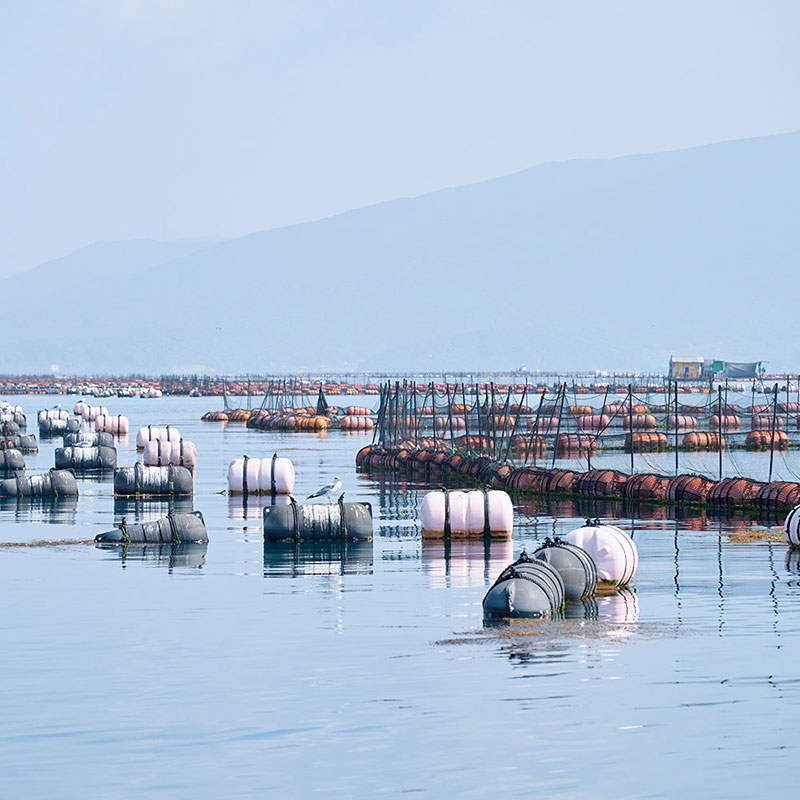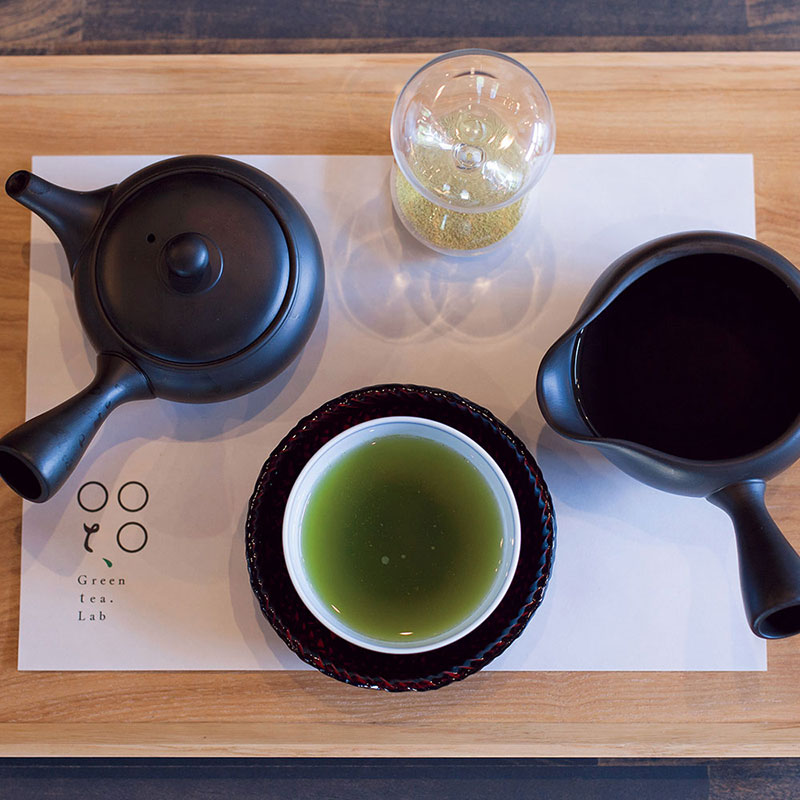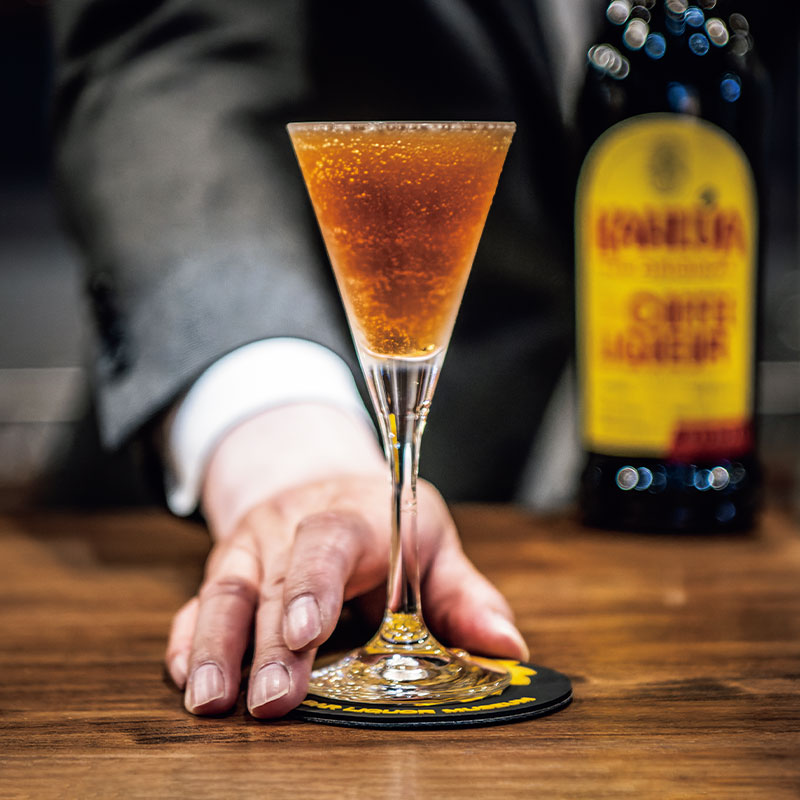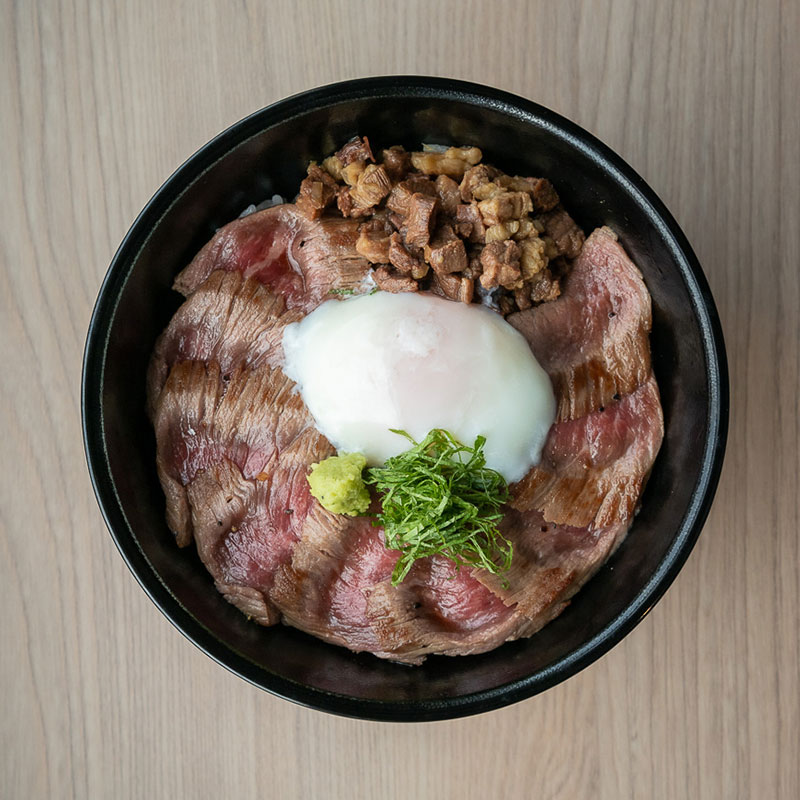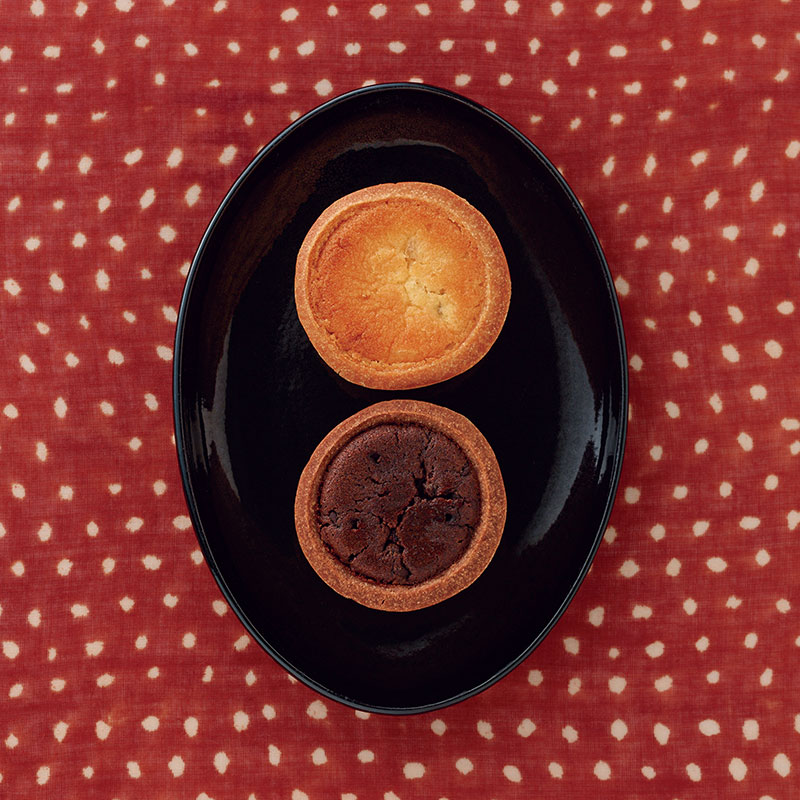The name of the restaurant embodies love for Amakusa and hopes for earthquake recovery.
Connected to Kyushu mainland by five bridges known as Amakusa Five Bridges, Amakusa is an archipelago consisting of over 120 large and small islands. ”Fukunobu,” which has run a restaurant in this seafood-rich region for many years, chose Amakusa Hon Maguro for its dish in their new location at the gateway of the skies. What is the charm of Amakusa Hon Maguro that even a Kumamoto native from our editorial department hadn’t heard of before?
We also inquired about the hope for recovery hidden in the restaurant’s name.
Savoring the Amakusa Hon Maguro
The interior of the restaurant is partitioned in an L-shape with counters encircling the cooking area. There are no seats intentionally set up so that even passengers about to depart can easily stop by – it’s a standing-only style. Located opposite the boarding gates, “Sushi Fukunobu – Amakusa Hon Maguro” is a stand-and-eat sushi bar where you can taste the seafood of Amakusa. Amidst the tantalizing array of fresh seafood, such as shrimp and sea urchin, a particularly eye-catching offering is a three-piece set of Amakusa Hon Maguro’s fatty tuna, medium-fatty tuna, and lean tuna. This is the signature dish of “Sushi Fukunobu.”
“The tuna is aged for several days after we get it. I want customers to enjoy the tuna when it’s at its best – when the color becomes vivid and the flavor and aroma deepen,” explains Keishin Fukuda (26 years old), the managing director of “Fukunobu Co., Ltd.” The tuna he speaks of, scientifically known as Thunnus, has become a luxury ingredient called the “black diamond” due to its decreasing catch in recent years. The juvenile Thunnus raised in the seas of Amakusa is what’s known as Amakusa Hon Maguro. According to Fukuda, its aroma is as rich as wild-caught tuna, and it is nicely fatty. At “Sushi Fukunobu,” not only can you enjoy this Amakusa Hon Maguro at the standing counter, but there’s also a takeaway menu available for the food court right in front of the store. Dishes like the “Maguro Extravaganza Bowl,” generously topped with medium-fatty and lean tuna, allow you to fully savor its charm.
In the bustling airport where people from all over the world come and go, Fukuda already has his eyes set beyond the opening, wanting to spread the name “Amakusa” to the world. “By the way, have you heard of Tuna Watching?” Towards the end of our interview, this unexpected question came from Fukuda. While Amakusa’s nearby waters are known for wild dolphin watching, the idea of Tuna Watching was new even to our Kumamoto-native editorial member. Intrigued, we headed straight to Amakusa to discover more.
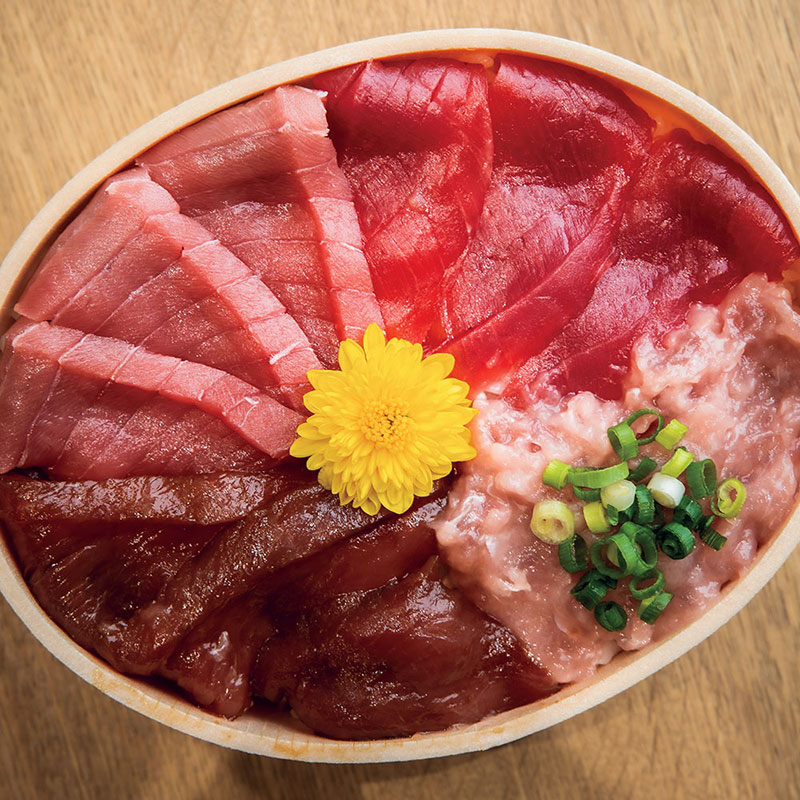
Maguro Extravaganza Bowl: 3,300 yen (tax included)
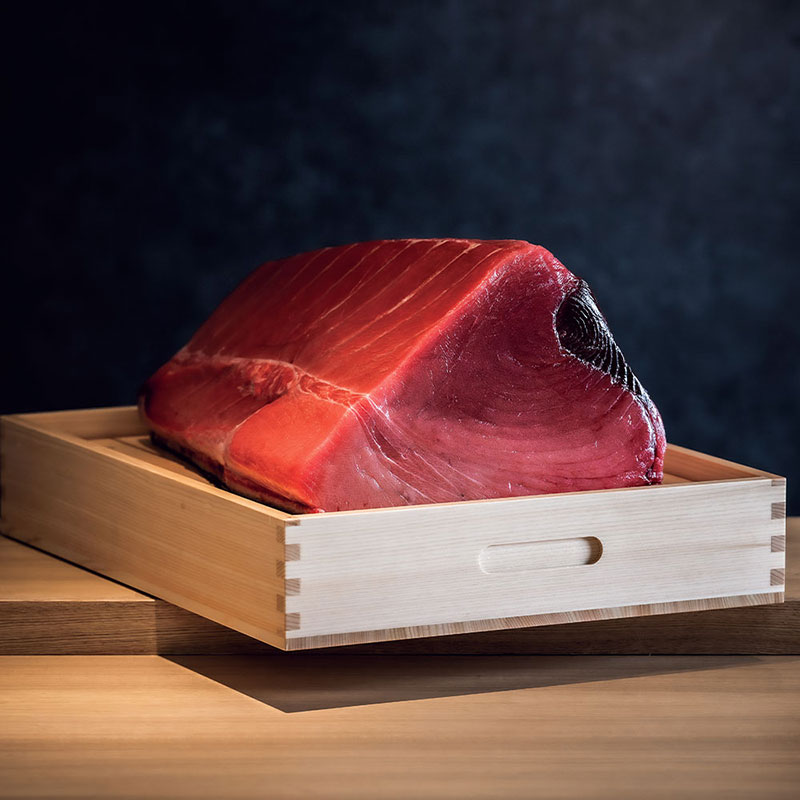
5 kilos (500 pieces worth) of Amakusa Hon Maguro
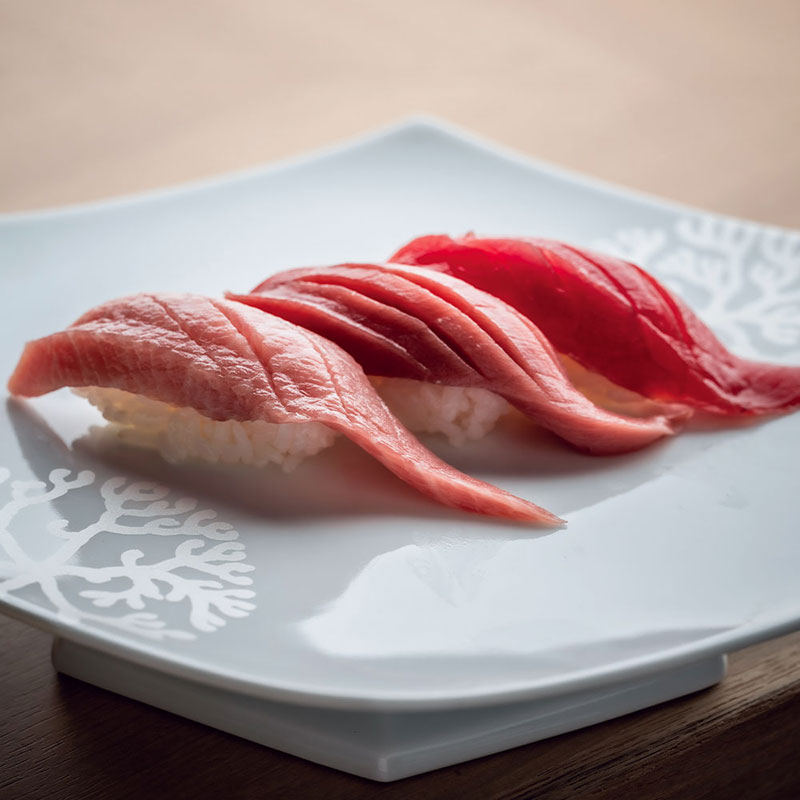
Signature plate (Amakusa Hon Maguro): Fatty, medium-fatty, and lean tuna: 1,980 yen (tax included)
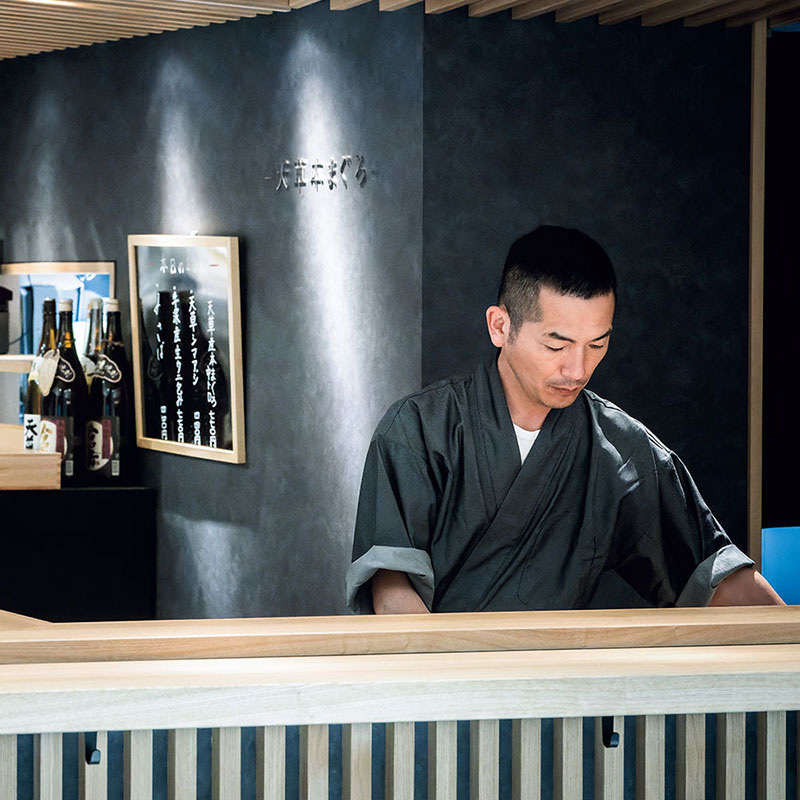
The counter can accommodate up to 8 people.
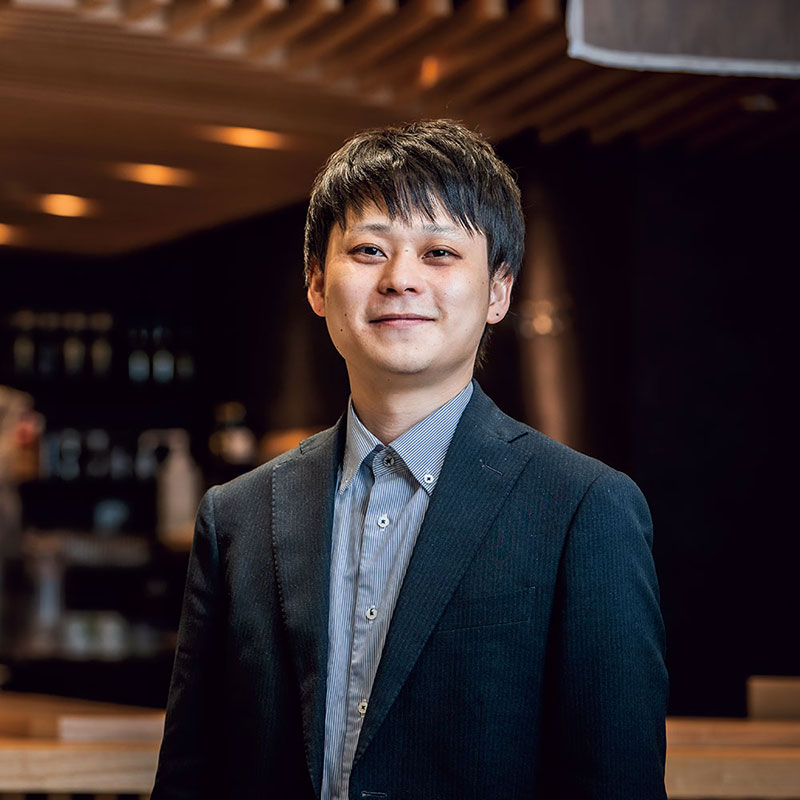
Keishin Fukuda: “I want to make Amakusa known worldwide through Amakusa Hon Maguro.”
A thrilling sight! The tuna’s intense competition for food.
“That way is already Kagoshima.” We visited Shinwa town located on the eastern side of Amakusa city, a 2-hour 15-minute drive from Kumamoto Airport. We boarded a fishing boat from Otao Fishing Port, and after a short 10-minute boat ride, we reached a massive tuna farm. Tuna Watching is a tour to visit Amakusa’s only tuna farm. The first thing that strikes you is its size. Spanning 1.5 kilometers in length and 4 kilometers in width, the sea surface is filled with buoys marking different sections. After navigating through these sections, we transferred to a boat anchored there. In a circular area enclosed by nets with a diameter of about 50 meters, countless large fish shadows swirled around — they were the Amakusa Hon Maguro. Suddenly, a large amount of feed was forcefully shot from a cylindrical tube installed on the boat, and the calm sea surface transformed into a fierce competition among the huge tuna. The bait consisted of mackerel and sardines. Watching hundreds of tuna surface and splash the water was a breathtaking sight.
“Would you like to try feeding them yourself?” We were handed a bucket filled with plump mackerels by Mr. Sawai. Throwing one into the sea, the tunas aggressively bit at it, offering us a close-up view of their powerful spectacle. “The waters of Amakusa are not only natural fishing grounds but also the perfect environment for aquaculture,” Mr. Sawai explains. According to him, the calm and stable temperature of the inner sea on the eastern coast of Amakusa, coupled with the minimal freshwater inflow from rivers, makes it ideal for aquaculture. Wanting to broadcast the allure of the tuna raised in such a place, he started Tuna Watching about nine years ago. However, the venture hasn’t gained as much traction, especially with the impact of the pandemic. The opening of “Sushi Fukunobu – Amakusa Hon Maguro,” bearing the name of Amakusa Hon Maguro, came at a perfect time. “I’d be happy if more people get to know the taste of Amakusa Hon Maguro at the airport and then want to visit Amakusa,” Mr. Sawai shared.
A lot of hopes for the future of those living in Amakusa are vested in “Sushi Fukunobu – Amakusa Hon Maguro,” named with love for Amakusa.
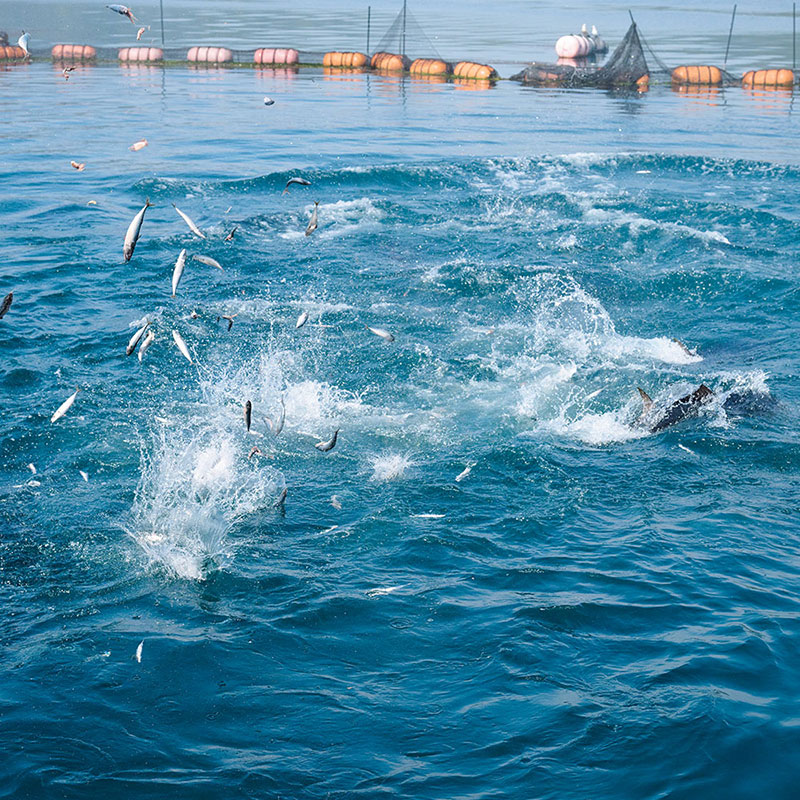
Bluefin tuna raised in the calm waters of Amakusa.
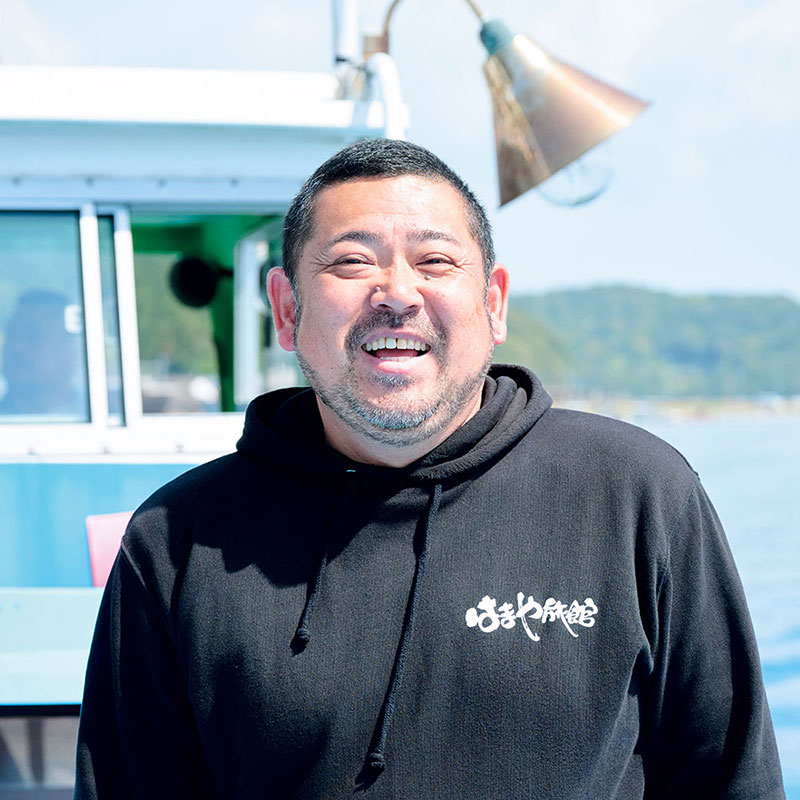
Yuya Sawai
The tuna guide responsible for promoting Amakusa’s tuna.
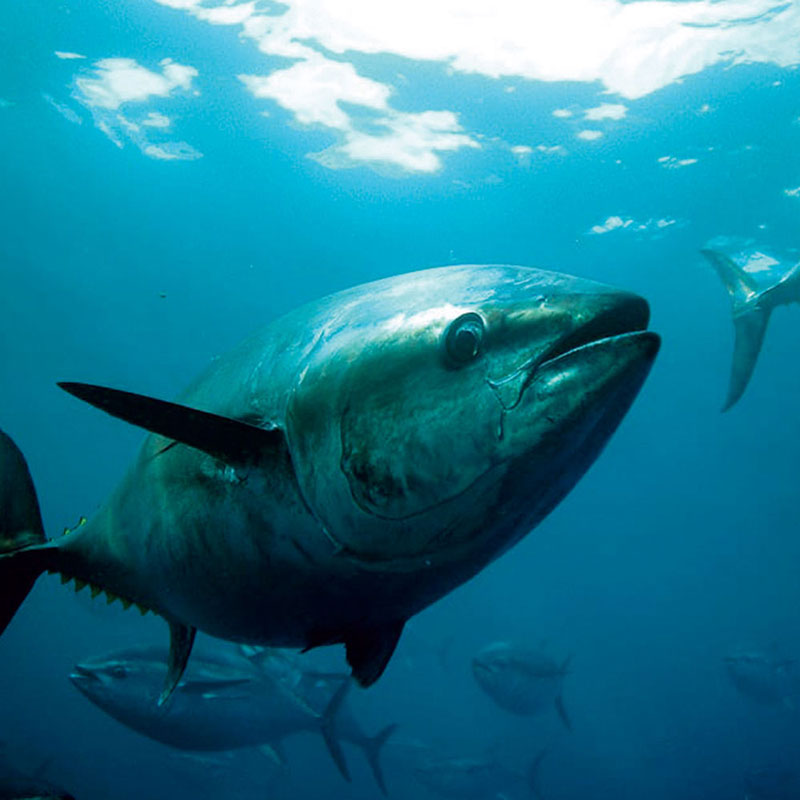
It takes about 3 years for them to grow from 50 to 100 kilograms.
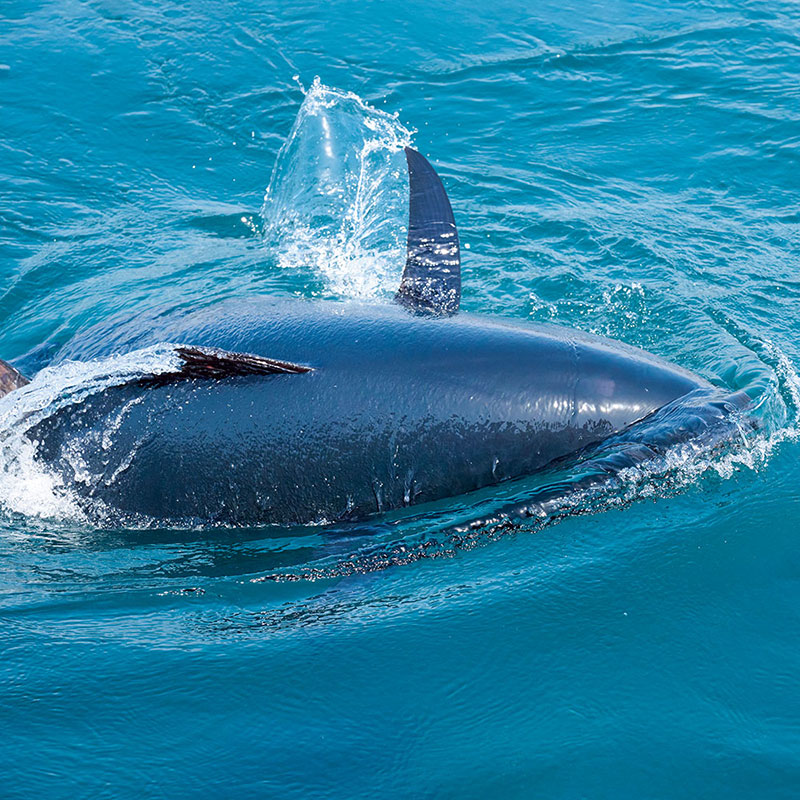
Some can swim at speeds of up to 80 km/h.
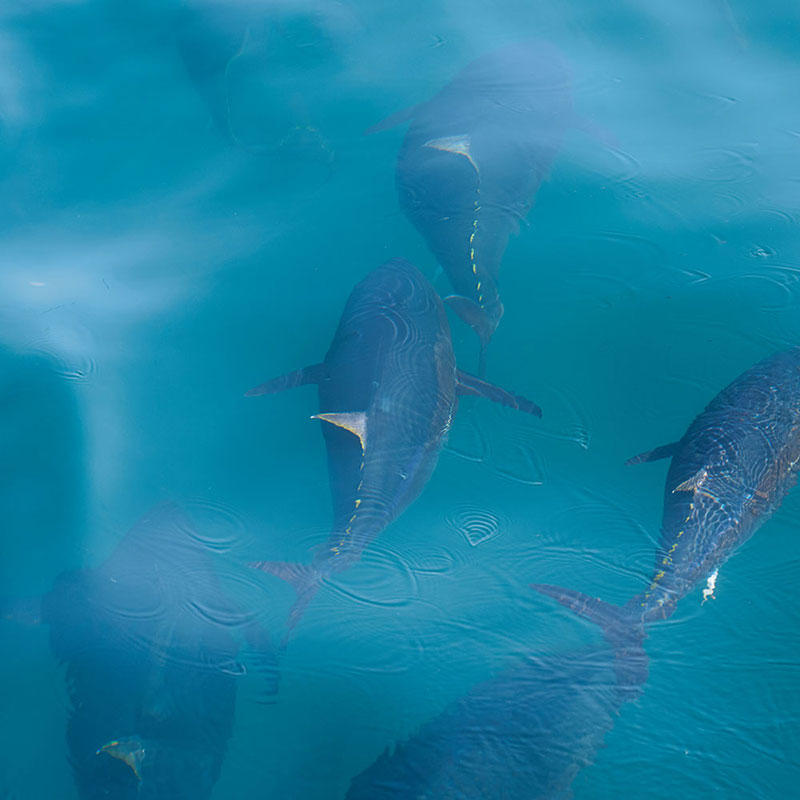
The cages (ikesu) are divided according to the growth stages of the tuna.
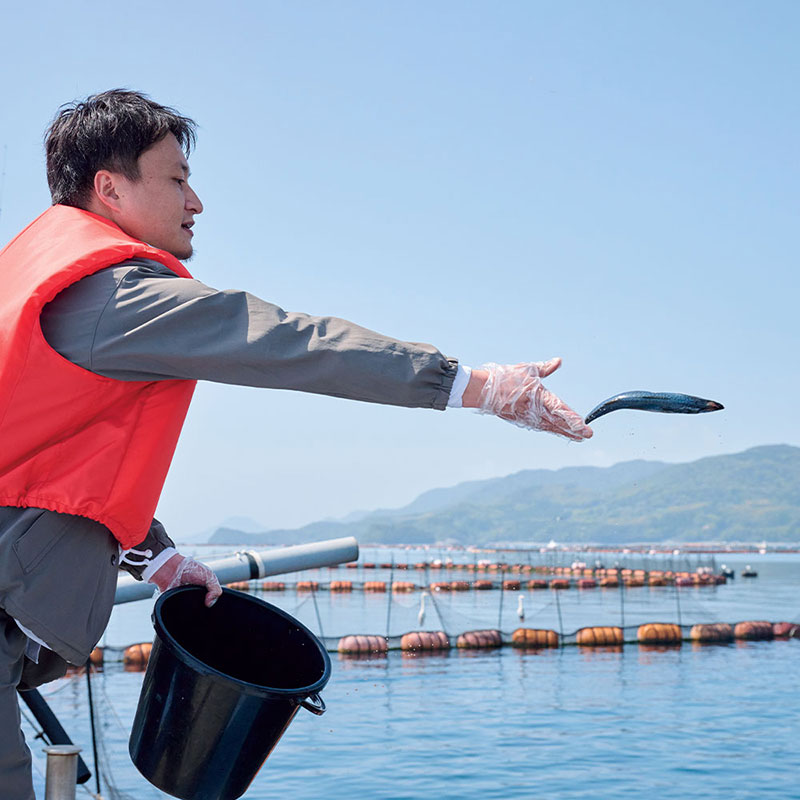
Tuna Watching
●Contact: Fisherman’s Inn Hamaya
●Address: 2406-1 Otao, Shinwa-cho, Amakusa-shi, Kumamoto-ken, JAPAN 863-0102
●Experience Time: 9:30 – 11:00. Note: May be cancelled due to weather.
●Price: 2500 yen (for junior high students and above), 1500 yen (for elementary students and below)
●Closed: Sundays, New Year’s holidays, public holidays
●Inquiries: 0969-46-2305
Earthquakes, the pandemic…
Overcoming adversity and looking to the future.
The Fukushin Group, with its 5 locations including seafood restaurants in the county, focusing on Amakusa’s seafood, initially opened its doors as “Japanese-style Restaurant Fukushin” in 1988. For 35 years, they steadily expanded. In March 2016, they fulfilled their long-held dream of opening their first sushi restaurant. However, a massive earthquake hit Kumamoto just a month later.
”We tried our best for a year, but customer traffic did not return, so we made the decision to close,” recalls Joto Fukuda (55 years old), the CEO and also the father of Keishin, the airport store manager. It was a tough decision to protect other branches and employees. As they continued to take steps in tandem with Kumamoto’s recovery, another crisis, the pandemic, hit. Their sales dropped to less than half.
”It was a hardship we’d never experienced before. I believe every business felt the same,” said Fukuda. Yet, he continued to persevere, believing in a hopeful future, even initiating takeaway lunch box sales as a solution. In 2021, he received an offer to open a store in the renovated Kumamoto airport. When considering a name for this symbol of recovery, the first name that came to Fukuda’s mind was “Sushi Fukushin”, the name of the sushi restaurant they had to close after the earthquake. Even though there are feelings of frustration and anger regarding the earthquake, Fukuda chose to take a positive view, focusing on the restaurant’s revival and the future, and decided to add “Amakusa Hon Maguro” to the name.
”Sushi Fukushin” will, with its dual wings of hope for recovery and love for Amakusa, take off towards the future from Kumamoto airport.
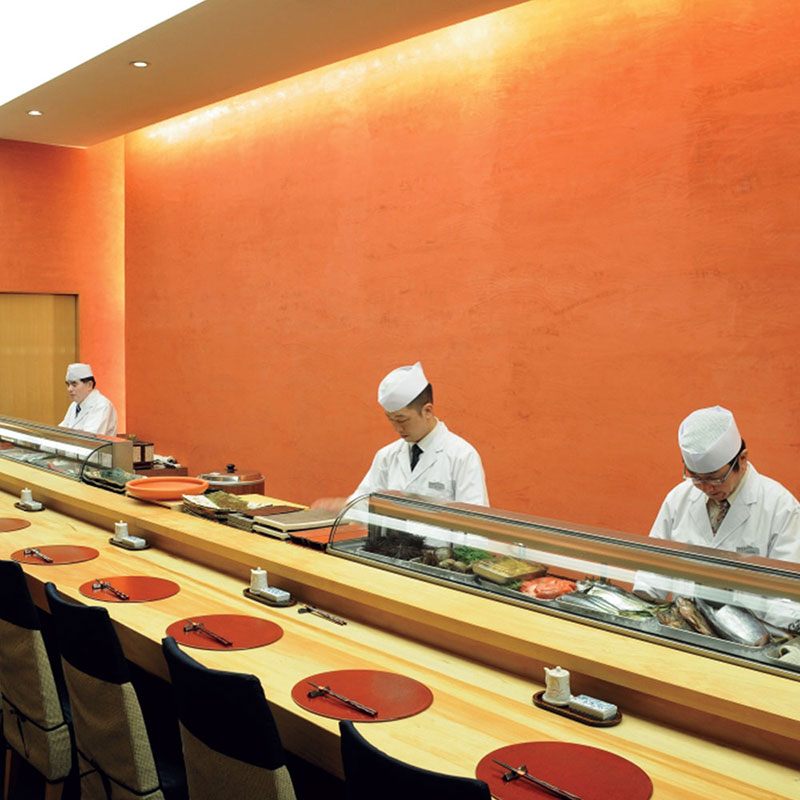
The restaurant “Sushi Fukushin”, which had to close due to the Kumamoto earthquake.
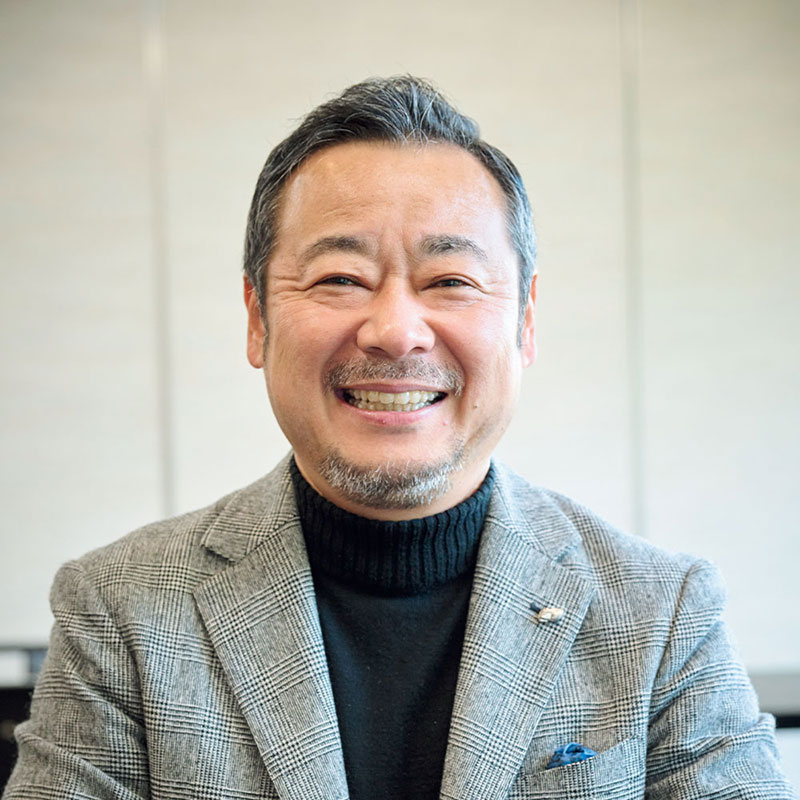
Joto Fukuda
“To promote Amakusa to the world, it takes courage to take that first step. Someone has to do it. We all need to think about how to improve Amakusa, refine our ideas and compete.”







